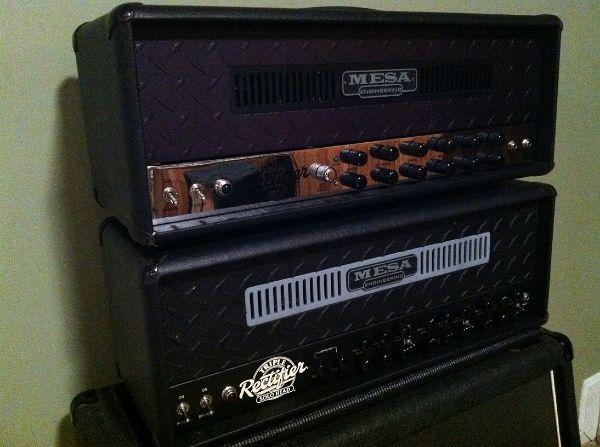Sorry for all my Recto questions. I have a 3 Channel Triple Solo head and a Rev G in the mail to me. I'm looking at the part numbers of the presence pots and I'm confused:
2 Channel Part 3 Channel Part
Orange Channel: 592151 (100K) 590737 (25K)
Red Channel: 592737 (25K) 590151 (100K)
Are they really swapped from the 2 channel to the 3 channel?
Lately, on the 3 channel Solo, I seem to prefer the Modern mode in the Orange Channel rather than the Red Channel. I assume that's because of the value of the presence pot. Looks like the Rev G already matched the 25K presence pot to the Red Channel. Is that right?
Thanks!
EDIT: on my screen that Table is laid out so nicely, but it doesn't post right. In any event, it looks like the 2 Channel Orange Channel gets a 100K presence pot, while the 3 Channel uses that for the Red Channel. And the 2 Channel Red Channel gets a 25K presence pot, while the 3 Channel uses that for the Orange Channel.
Is that right? If so, why the switch?
2 Channel Part 3 Channel Part
Orange Channel: 592151 (100K) 590737 (25K)
Red Channel: 592737 (25K) 590151 (100K)
Are they really swapped from the 2 channel to the 3 channel?
Lately, on the 3 channel Solo, I seem to prefer the Modern mode in the Orange Channel rather than the Red Channel. I assume that's because of the value of the presence pot. Looks like the Rev G already matched the 25K presence pot to the Red Channel. Is that right?
Thanks!
EDIT: on my screen that Table is laid out so nicely, but it doesn't post right. In any event, it looks like the 2 Channel Orange Channel gets a 100K presence pot, while the 3 Channel uses that for the Red Channel. And the 2 Channel Red Channel gets a 25K presence pot, while the 3 Channel uses that for the Orange Channel.
Is that right? If so, why the switch?




